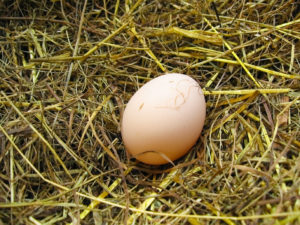 Despite vast research in all scientific areas, the origin of life and consciousness remains unknown.
Despite vast research in all scientific areas, the origin of life and consciousness remains unknown.
Bottom up molecular theories assume that chemical properties, reactions, and unique environments can explain the origin and evolution of life.
Information in cells may need top down, causal explanations.
Can life and consciousness be separated?
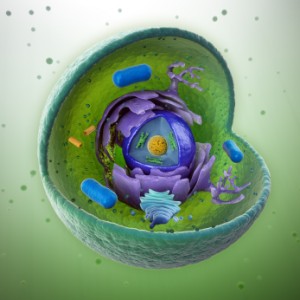 No definition of life has been satisfactory. Most include a cell with compartments, self-copying, metabolism, energy production or capture, adaptation to the environment and evolution. Another criterion is the transmission of information.
No definition of life has been satisfactory. Most include a cell with compartments, self-copying, metabolism, energy production or capture, adaptation to the environment and evolution. Another criterion is the transmission of information.
The definition of life is muddied by strands of DNA in viruses and jumping genes with editing capabilities, group activity, cognitive features, and evolution – making it hard not to consider them alive, as well (see posts on Jumping Genes and Viruses in Evolution).
It is not known whether there can be life without consciousness or consciousness without life?
Bottom Up and Top Down Theories
The major current popular theories of life and consciousness can be called chemical evolution. Chemical matter somehow evolves into living matter. Living matter then somehow emerges with consciousness. This type of explanation is referred to as bottom up – from molecules up to cells, and creatures. It involves inherent properties of chemicals responding to complex environmental forces.
Less popular top down approaches assume that forms of energy, or physical forces, change the flow of the chemical reactions and molecules in particular ways. This approach looks for specific types of energy phases channeling chemical reactions into unique paths.
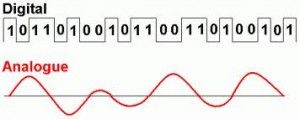 Both approaches must account for information transmission, digital and analogue. Digital information includes DNA, RNA and amino acids – possibly alternative splicing and epigenetics. Analogue information means continuous changing of interlocking shapes.
Both approaches must account for information transmission, digital and analogue. Digital information includes DNA, RNA and amino acids – possibly alternative splicing and epigenetics. Analogue information means continuous changing of interlocking shapes.
Of the many bottom up chemical evolution theories, this overview can only mention the broad outlines. Currently, there are three top down approaches.
Bottom Up Chemical Evolution
 It is chemists, working on evolutionary questions, who have noted a remarkable amount of “molecular intelligence that guide the bottom up emergence of living matter.” Some have suggested that Darwin’s rich warm pond, including small molecules storing and copying information, assumes “intelligent behavior is not restricted to complex genomes but is an inherent property of matter”. Darwin also predicted the development of more complex intelligent materials.
It is chemists, working on evolutionary questions, who have noted a remarkable amount of “molecular intelligence that guide the bottom up emergence of living matter.” Some have suggested that Darwin’s rich warm pond, including small molecules storing and copying information, assumes “intelligent behavior is not restricted to complex genomes but is an inherent property of matter”. Darwin also predicted the development of more complex intelligent materials.
Astrobiology
For life to have begun from specific chemicals, these molecules either had to be produced in the stellar universe and deposited starting on early earth, 4.5 billion years ago; or, geophysical and environmental forces created the chemicals. These chemicals then became self-replicating.
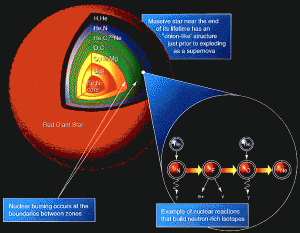 Research shows a variety of biological molecules formed in outer space. The elements came from complex stellar forces and coalesced in earth leaving ample supplies of carbon, nitrogen, oxygen, and many other chemical elements.
Research shows a variety of biological molecules formed in outer space. The elements came from complex stellar forces and coalesced in earth leaving ample supplies of carbon, nitrogen, oxygen, and many other chemical elements.
Cosmic dust includes aromatic and aliphatic type chemicals, and polycyclic aromatic hydrocarbons. These could be transformed in space through reactions with hydrogen, and oxygen to more complex compounds. Glycine was found in a comet. A meteorite contained uracil, an RNA component, and 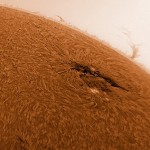 xanthine. A distant star contained a sugar molecule glyceraldehyde, a part of RNA. In a meteorite there was more left handed alanine than right handed.
xanthine. A distant star contained a sugar molecule glyceraldehyde, a part of RNA. In a meteorite there was more left handed alanine than right handed.
While finding these chemicals in space is intriguing, at this moment, there is no coherent theory explaining complex living cells from outer space.
Many Chemical Theories
 Theories of life emerging spontaneously from a warm pond included an early earth with methane, ammonia, water, hydrogen sulfide, carbon dioxide, phosphates and then oxygen. Perhaps these were energized by lightning or radioactivity.
Theories of life emerging spontaneously from a warm pond included an early earth with methane, ammonia, water, hydrogen sulfide, carbon dioxide, phosphates and then oxygen. Perhaps these were energized by lightning or radioactivity.
Chemical reactions in metals like iron or zinc could be a basis for life. Energetic thermal vents in the ocean are now under consideration as a source of energy to kick start metabolism. Properties of mud, clay and crystals are all interesting possible chemical environments that could stimulate unique reactions.
Lightning with CO2, water and nitrogen produce formaldehyde in large amounts and a small amount of glyceraldehyde, which, in alkaline environments, could become sugars, including RNA’s ribose sugar.
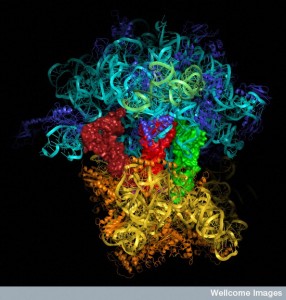 All theories ultimately look to lipids forming membranes and eventually RNA forming before DNA. RNA is a “chemist’s nightmare” because it has a large size, building blocks made of carbohydrates, bonds that are unstable in water, and is generally unstable. Many different parts of the RNA synthesis can occur naturally, but only separately; they only occur together with human intervention. A major problem includes complex mixtures with bonds that are unstable in water – some important bonds are just not possible with these conditions.
All theories ultimately look to lipids forming membranes and eventually RNA forming before DNA. RNA is a “chemist’s nightmare” because it has a large size, building blocks made of carbohydrates, bonds that are unstable in water, and is generally unstable. Many different parts of the RNA synthesis can occur naturally, but only separately; they only occur together with human intervention. A major problem includes complex mixtures with bonds that are unstable in water – some important bonds are just not possible with these conditions.
Coordinated Chemical Networks Adapt to Change
Chemical evolutionary research attempts to find molecular networks that can learn new structures – to capture and integrate information from the environment.
This work attempts to find the simplest chemical systems that can perform intelligent behavior and adapt. However, there is currently no definition of “intelligent” chemical behavior. A previous post has noted that strands of DNA in jumping genes and in viruses are close to a molecule showing intelligent behavior in their ability to use cellular editing functions.
Hierarchical Structures
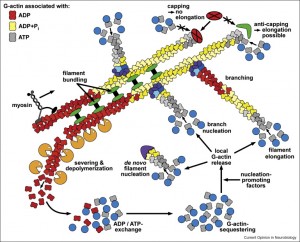 In life, the chemical structures in evolution have shown remarkable increase in hierarchical complexity, as well as an ever increasing ability to grow and change functions.
In life, the chemical structures in evolution have shown remarkable increase in hierarchical complexity, as well as an ever increasing ability to grow and change functions.
In cells large molecules assemble and reassemble such as the cytoskeleton of neurons with microtubules (see post). Chemical reactions are able to overcome natural dynamic limitations of reactions with enzymes.
Cellular Identity of “Self”
At some point the cellular identity of “self” occurred whereby the Darwinian process could commence. It is this chemical response of “self” and “non self” in a cell that has allowed the evolution with natural selection to proceed. The chemical properties that defined self included permeability of membranes to food for the cell, and keeping out toxins.
Chemical evolution research attempts to find characteristics of fats that could create the necessary cellular compartments with membranes.
For chemical evolution to form a cell, it must thwart the thermodynamic property of entropy and instead increasingly make energy for the complex cell from the environment. Energy systems are needed that can do redox cycling, which is the key to energy production in modern cells.
Chemical Approaches to Building a Living Cell
There are a variety of chemical approaches in intense research
Self Assembled Phospholipids and Fatty Acid Sacs
Some lipids are able to form sacs, looking like vesicles. Large molecules in water will form different phases and structures, mimicking structures of the cell compartments. These vesicles could compete, grow and divide.
Unexpected Binding Properties
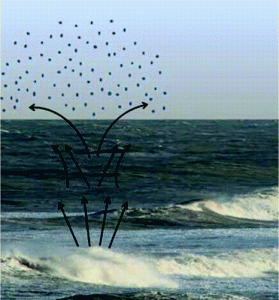 Geophysics environments provide water/air interfaces, which produce suspensions of liquids or small solids in the air called aerosols. These little particles have a great total surface area interacting with organic material films. At these unique interfaces, synthesis and folding of molecules can be facilitated. These aerosols are exposed to radiation, pressure, temperature, humidity and lightning.
Geophysics environments provide water/air interfaces, which produce suspensions of liquids or small solids in the air called aerosols. These little particles have a great total surface area interacting with organic material films. At these unique interfaces, synthesis and folding of molecules can be facilitated. These aerosols are exposed to radiation, pressure, temperature, humidity and lightning.
Molecular Complementarity
 While complementarity is very uncommon in random molecules, it is ubiquitous in protein structures in life. Every molecule binds to another based upon shape. Any molecule that binds to another changes both molecules. Molecules with opposite or synergistic effects bind together most frequently, the same principle of structure equals function noted with proteins. These same complementary molecules are slightly altered in evolution and re used for many different purposes, adding shapes from jumping genes and viruses.
While complementarity is very uncommon in random molecules, it is ubiquitous in protein structures in life. Every molecule binds to another based upon shape. Any molecule that binds to another changes both molecules. Molecules with opposite or synergistic effects bind together most frequently, the same principle of structure equals function noted with proteins. These same complementary molecules are slightly altered in evolution and re used for many different purposes, adding shapes from jumping genes and viruses.
Oscillating Chemical Reactions
Oscillations are a feature of living cells. Cycles can occur in micro emulsions, tiny droplets of water suspended in oil. These can create many different patterns and appear to communicate like bacteria for group activity.
Information Transmission
Currently, there is no answer to explain biological information. While shapes can be used to store information it is not at all clear how such a specific digital DNA code could have evolved without a top down information flow.
The Hot Vents Theory
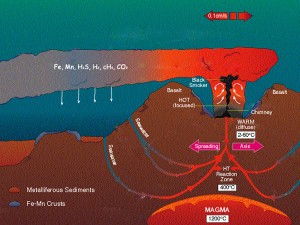 Engineers look at the high-energy vents in the ocean as a source of metabolism. Living cells use a large amount of energy, which they get from very complex chemical reactions housed in even more complex machinery such as the photosystem of photosynthesis.
Engineers look at the high-energy vents in the ocean as a source of metabolism. Living cells use a large amount of energy, which they get from very complex chemical reactions housed in even more complex machinery such as the photosystem of photosynthesis.
These theories need very high-energy sources to jump-start the obvious complexity of life that appears to counter entropy – perhaps, the most fundamental law of physics. In living creatures chaos decreases.
Older theories use acidic “black smoker” deep-sea vents, more recent theories the 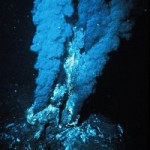 hydrothermal field, which lasts much longer. In these systems, cells pump charged ions like sodium, potassium and hydrogen, which also occurs in all living cells. These deep-sea vents also pump protons across iron-nickel-sulfur walls, which appear somewhat similar to microbes using this oceanic proton, pump to a protein ferredoxin, which is used to make energy.
hydrothermal field, which lasts much longer. In these systems, cells pump charged ions like sodium, potassium and hydrogen, which also occurs in all living cells. These deep-sea vents also pump protons across iron-nickel-sulfur walls, which appear somewhat similar to microbes using this oceanic proton, pump to a protein ferredoxin, which is used to make energy.
No Complexity in Chemical Evolution Theories
The problem of course, is the complexity of life is not included in these theories. The microbes using this proton pump are already cells with vast complexity. It is the lack of any plausible way that the vast complexity could have grown from simple chemicals – even with unique reactions, binding, and physical forces – that forces us look to Top Down Approaches.
Of course, both Top Down and Bottom Up could occur at the same time.
Physical Energy and Information Theories – Top Down Approach
The biggest problem with all chemical evolution theories is the lack of a system to kick start information transmission. DNA appears to be a passive repository of some detailed information that somehow spans the digital and the analogue – changes code into fluctuating shape.
Quantum Information
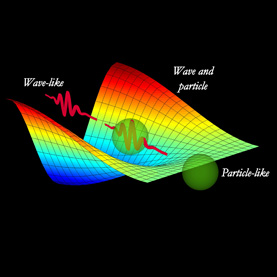 A previous post described quantum mechanics, the most accurate description of our world at the very small size, recruiting information theory. Planck’s early descriptions of the quantum used equations relating statistical information and entropy. Entropy, a measure of the disorganization of a system, basically measures a level of information. This quantum information theory is now considered essential to understanding radiation and quantum gravity. It is also the basis of the work proceeding to build a quantum computer. (see post)
A previous post described quantum mechanics, the most accurate description of our world at the very small size, recruiting information theory. Planck’s early descriptions of the quantum used equations relating statistical information and entropy. Entropy, a measure of the disorganization of a system, basically measures a level of information. This quantum information theory is now considered essential to understanding radiation and quantum gravity. It is also the basis of the work proceeding to build a quantum computer. (see post)
While it is clear that quantum mechanics, biological systems, and mental systems all utilize information, it is not at all understood how they might relate to each other, or what kind of theory could explain all three.
Phi
Giulio Tononi’s theory of consciousness posits a flow of integrated information, which could apply also to life. Information of the whole can be greater than that of each of its parts – this numerical difference is the number phi.
A system with a large enough value of phi that is integrated, or causal, is conscious.
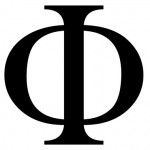 Human phi is the difference of integrated energy in the brain greater than the sum of all the brain cells. Tononi is attempting to develop equations to calculate integrated information related to human beings in different states of consciousness, such as coma, vegetative state and waking consciousness.
Human phi is the difference of integrated energy in the brain greater than the sum of all the brain cells. Tononi is attempting to develop equations to calculate integrated information related to human beings in different states of consciousness, such as coma, vegetative state and waking consciousness.
In his theory, consciousness exists at many levels, such as those described in various posts about strands of DNA in viruses, microbe cells, and brains. His theory assumes the same integrated information can exist in non-living robots and computers.
The neuroscientist Cristof Koch, feels there is merit in phi, and adds, “consciousness is not an emergent feature of the universe. It’s a fundamental property.”
Energy and Information Phase Transitions
A top down complementary theory to phi is put forward by Paul Davies, and Sara Walker, where causation is key to the top down influence on lower-level organization hierarchies.
All living systems have unique management of energy and information, with increased complexity from the non-living even though the basic chemistry might be similar. Unlike other physical systems responding to fixed laws of physics, living systems appear to have a sense of “causation” in the entire  system. This causation appears to change in evolution of the organism based on the past and present states.
system. This causation appears to change in evolution of the organism based on the past and present states.
The production of light and heat in a fire is similar to the burning of oxygen in cellular metabolism, but the cell is infinitely more complex than the candle.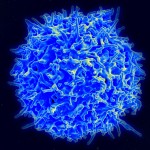
Chemical evolution looks for the development of information usage in living systems, with self-polymerization of available chemicals. But, living matter behaves in unique ways, different from any complex chemical or physical mechanisms. Living systems have decision-making, goal direction and the ability to be independent. Living systems are able to react to situations.
 If life is studied with goal direction in mind, then the information flow makes more sense. Davis and Walker emphasize that there is no current framework to make ordinary chemical reactions suddenly become complex enzyme reactions. However, in physics there are phase transitions where the properties of matter change – transitions from solids to liquids to gases to special quantum states. In a similar manner life could be an energy phase transition.
If life is studied with goal direction in mind, then the information flow makes more sense. Davis and Walker emphasize that there is no current framework to make ordinary chemical reactions suddenly become complex enzyme reactions. However, in physics there are phase transitions where the properties of matter change – transitions from solids to liquids to gases to special quantum states. In a similar manner life could be an energy phase transition.
Organisms are goal directed and “causal,” which affects all aspects of an otherwise simple material system. This causality affects the reactions and functions of the system. The “top down energy flow” is global, not local, and energizes the entire material base in a new causal, directed way. It is not one particular structure but the biological information exists throughout the system. Living, self-replicating systems are quite different in terms of structure and logic from the “trivial replication associated with crystals.” The phase transition means that information has a causal efficacy over the molecular biology. The flow of information is “bi-directional” between molecular chemistry and causal energy flow. The directional information flow can change with newly evolved laws of information.
This view allows for a broader range of life-forms existing in different chemical situations, such as extreme environments of archaea in ocean vents.
The Origin of Life and Consciousness – Neo-Vitalism
With the advent of ENCODE, epigenetics, and alternative splicing, the historical disdain that Darwinists have inflicted on Lamarck will need to be tempered. With modern  developments in quantum mechanics information theory, and the enormous complexity of cellular molecular biology, modern forms of vitalism, a theory that was considered completely discredited, will also need to be reconsidered.
developments in quantum mechanics information theory, and the enormous complexity of cellular molecular biology, modern forms of vitalism, a theory that was considered completely discredited, will also need to be reconsidered.
Consciousness and life are qualities of living cells showing unusual complexity, organization and information flows. A combination of top down causal organization and bottom up chemical evolution appears to be necessary to understand life and consciousness.